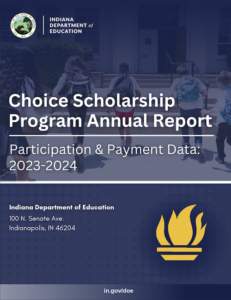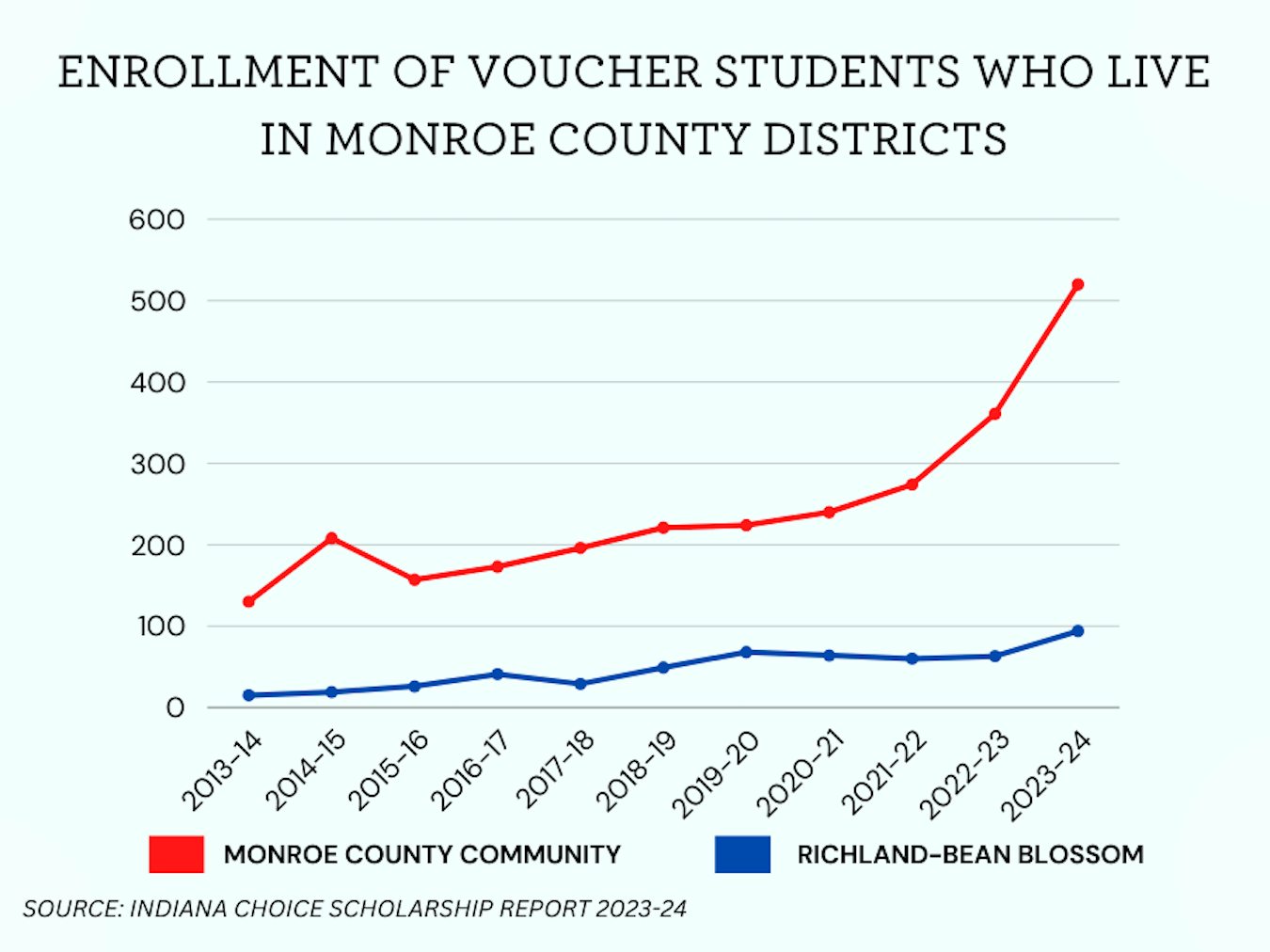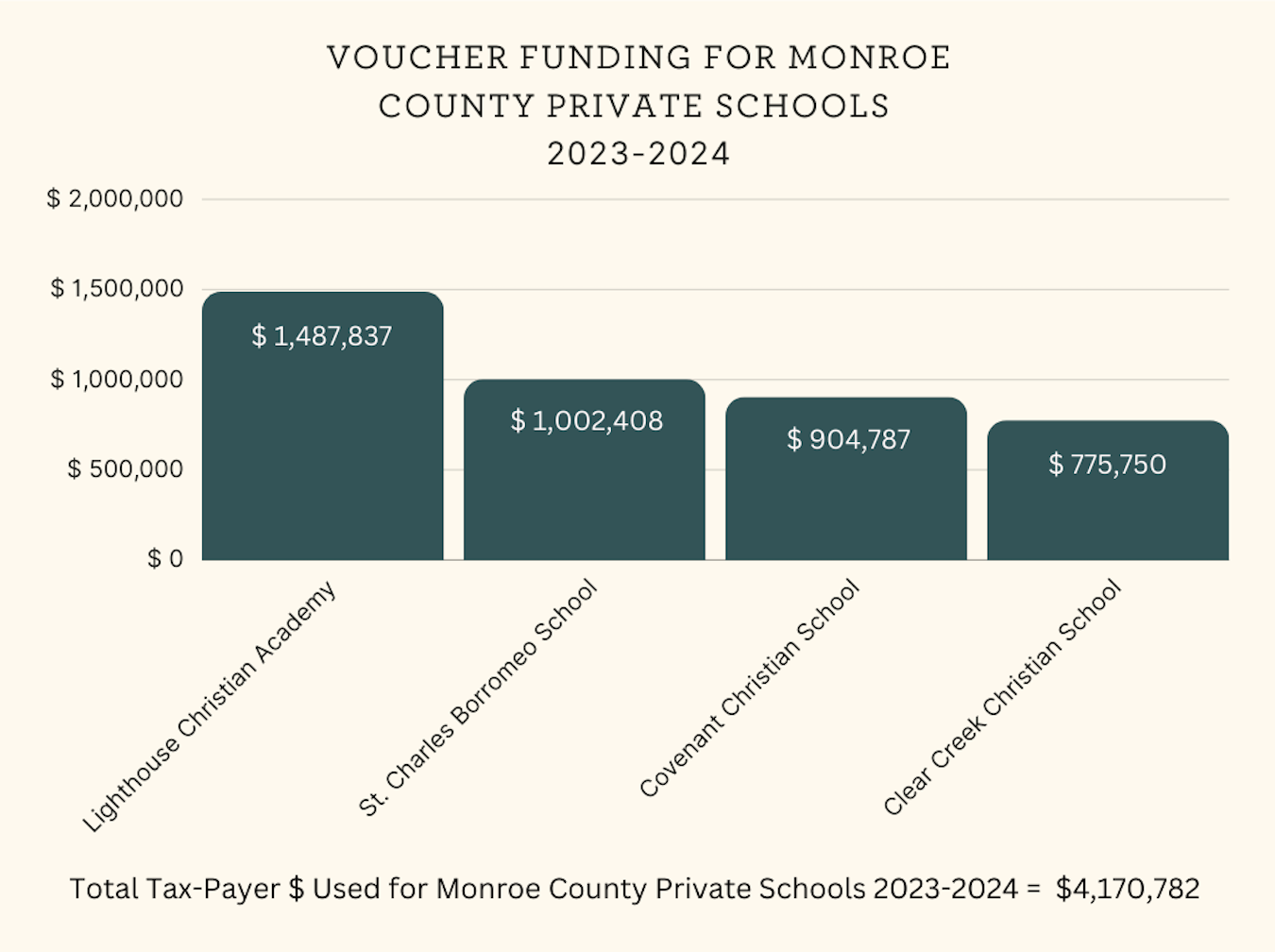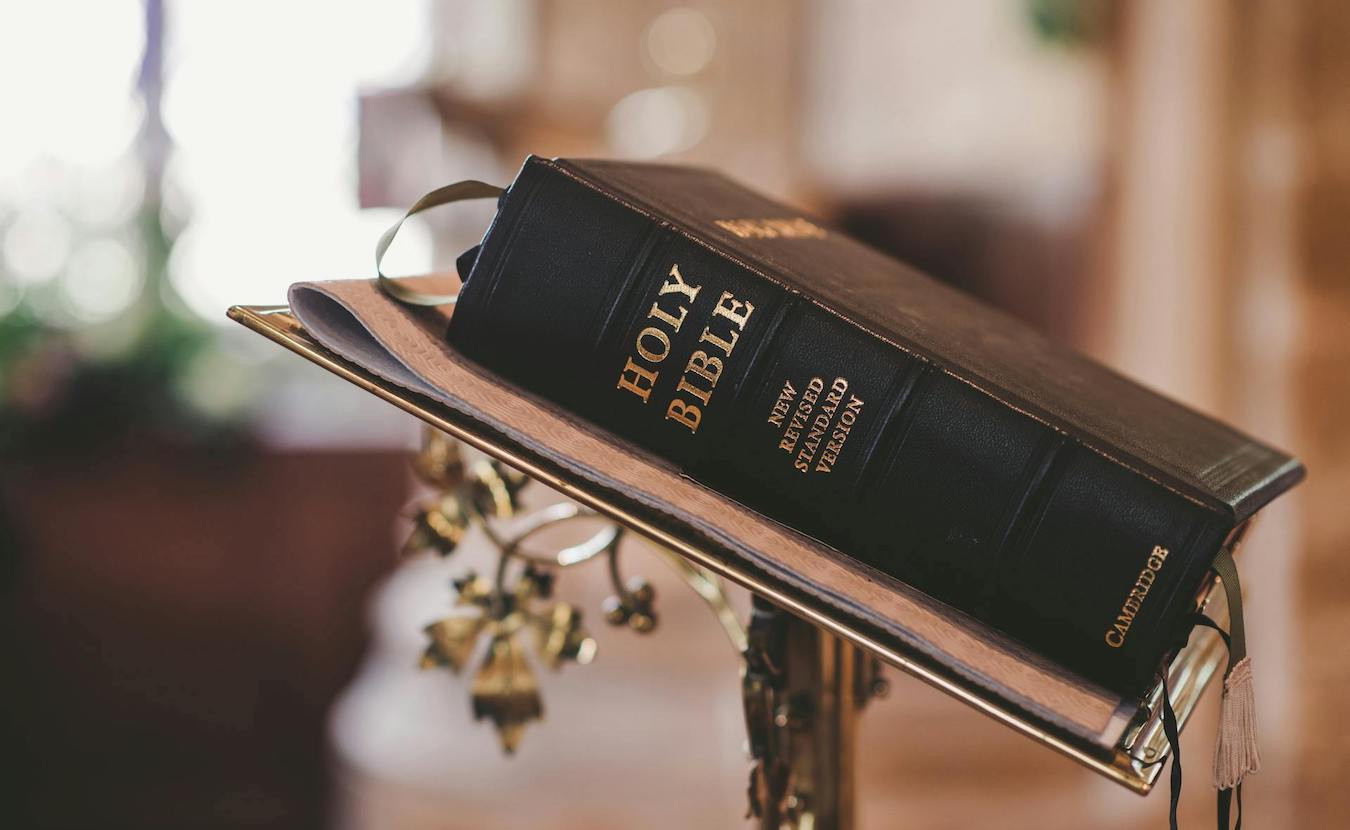Indiana’s 2023–2024 voucher report came out this summer, and the results were as expected. The program, which provides state-funded tuition vouchers for students in private schools, got a lot bigger and a lot more expensive with legislation that made nearly all Hoosier students eligible.
The program enrolled a record 70,095 students, a 31 percent increase over the previous year. The cost to Hoosier taxpayers ballooned to $439 million, some 40 percent higher than in 2022–2023.
 Voucher use in Monroe County followed a similar trend: 614 students who live in the county received vouchers in 2023–2024, a 45 percent increase from the previous year. Statewide, about 6 percent of K–12 students attend private schools using vouchers.
Voucher use in Monroe County followed a similar trend: 614 students who live in the county received vouchers in 2023–2024, a 45 percent increase from the previous year. Statewide, about 6 percent of K–12 students attend private schools using vouchers.
Republican legislators and then-governor Mitch Daniels created the voucher program in 2011 with the sales pitch that it would help kids from low-income families escape “failing” public schools. As the program has expanded, they’ve long stopped pretending that’s the point.
Today, vouchers have become a state subsidy for families that already send their children to private schools. According to the state report, two-thirds of voucher recipients in 2023–2024 had never attended an Indiana public school. Most were not from poor families.
The average family income for a voucher student was $99,121, an increase of more than 20 percent from the previous year. That’s well above the state’s median household income of about $67,000. Fewer than 9 percent of voucher students are Black, compared with 13.4 percent of public school students.
Furthermore, there’s no evidence that attending a private school helps most students. Studies show that voucher students who switch from public to private schools, on average, fall behind academically, sometimes by a lot.
So why are we doing this? As West Lafayette lawyer-blogger Doug Masson writes, vouchers in Indiana are designed to “subsidize religion, weaken teachers’ unions and redirect public money to friends and well-wishers of pro-privatization policymakers.” That includes Indianapolis-based Institute for Quality Education and its political arm, Hoosiers for Quality Education, which gave more than $800,000 to Indiana Republican campaigns in the two years before the voucher expansion.

The redirected public money can add up. In Monroe County, four private schools — Clear Creek Christian School, Covenant Christian School, Lighthouse Christian Academy, and St. Charles Borromeo School (a Catholic school) — received a total of $4.17 million in voucher funds in 2023–2024. The schools enrolled 721 students with vouchers, some from neighboring counties.
Public schools get public funding on the expectation that they will serve all students. In Indiana, private schools get public money with no such requirement. As an academic study titled “Dollars to Discriminate” found, they can reject students for their religion, disability, previous test scores, native language, or because a student isn’t “a good fit.”
“
Public schools get public funding on the expectation that they will serve all students. In Indiana, private schools get public money with no such requirement.
”
Heritage Christian School in Indianapolis, for example, received $5.6 million in voucher funding in 2023–2024, the most of any school in the state. That’s almost $2 million more than it received the previous year, a sizable windfall from the program’s expansion. According to its website, students who transfer to Heritage must have at least a 2.5 grade point average and scores of “proficient” on ILEARN tests or comparable assessments. (Only about 30 percent of Indiana students are proficient in reading and math.) Students applying to grades 7–12 must “share their story of faith in Jesus Christ.” Parents must agree to a “statement of faith” that affirms fundamentalist beliefs and the literal truth of the Bible.
Also, tuition is as high as $16,700. Vouchers typically cover only 40 to 50 percent of that, according to the school. Families may have to come up with the rest.
Policies that bar or discourage LGBTQ+ students, families, and employees are common at schools that accept vouchers. In 2017, when then-President Donald Trump and Secretary of Education Betsy Devos were pushing to expand vouchers nationally, critics cited Bloomington’s Lighthouse Christian Academy for its allegedly anti-gay policies. The Archdiocese of Indianapolis, which includes Bloomington and St. Charles School, faced lawsuits when it fired a teacher and counselors for being in same-sex marriages.
Some may argue that there’s nothing wrong with having schools that are off-limits to most students and that promote sectarian religious views. But should the public pay for them?

Read more
Steve Hinnefeld writes about education at his blog School Matters. You can find his other articles for Limestone Post on his contributor page, including articles on education: “School Matters: Indiana Short-Changes Rural Schools” and “Local Parents, Educators Face ‘Attack’ on Public Schools from Indiana Lawmakers.”
Hinnefeld has also written about the local housing crisis: “Deep Dive: Struggling with Housing Supply, Stability and Subsidies” and “‘No Silver Bullet’: Advocates, Officials Use Many Tactics on Housing Woes” — which he wrote for the series “Deep Dive: WFHB & Limestone Post Investigate” — won 1st Place for Non-Deadline Story or Series in the Indiana Pro Chapter of the Society of Professional Journalists “Best in Indiana” Journalism Contest.




